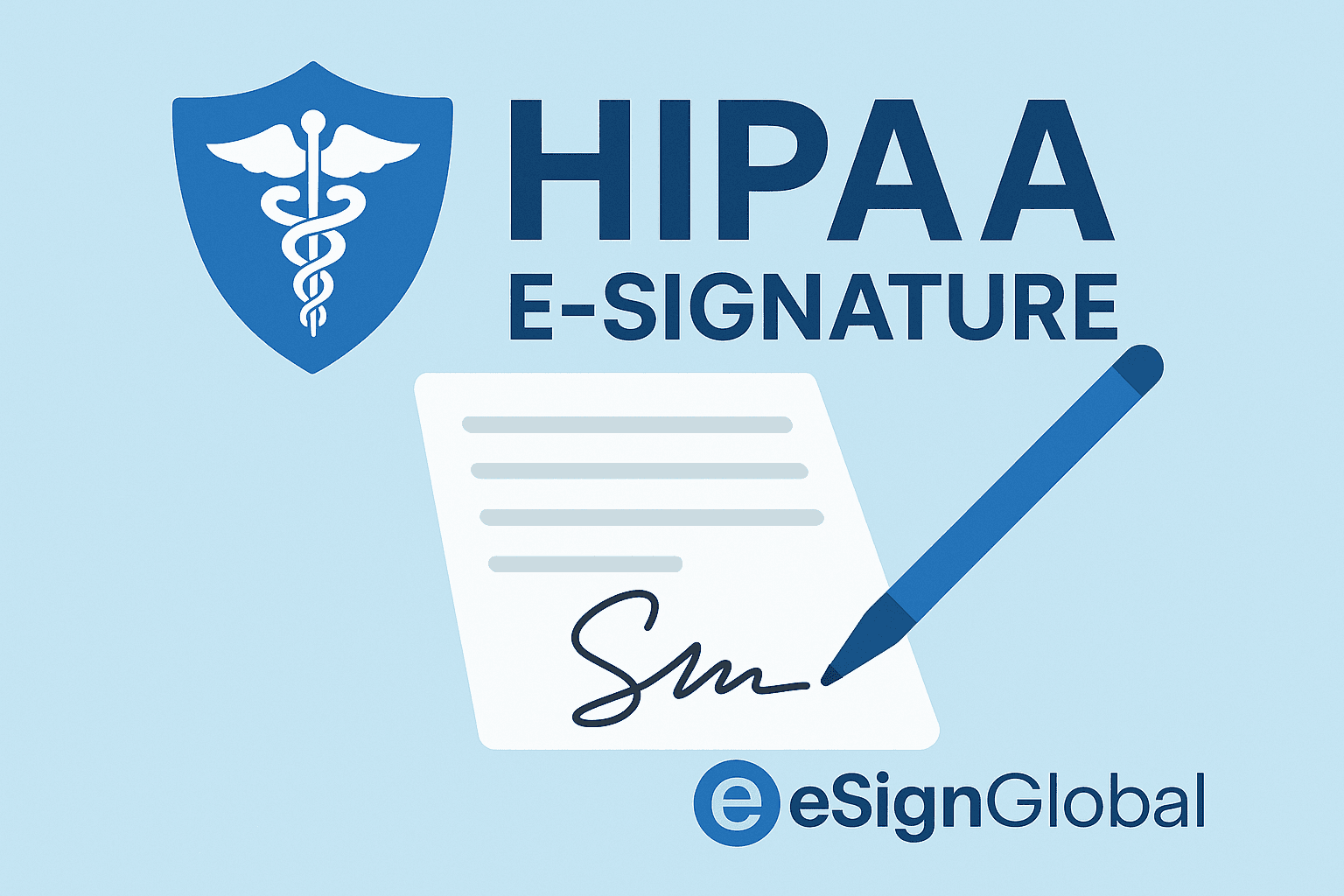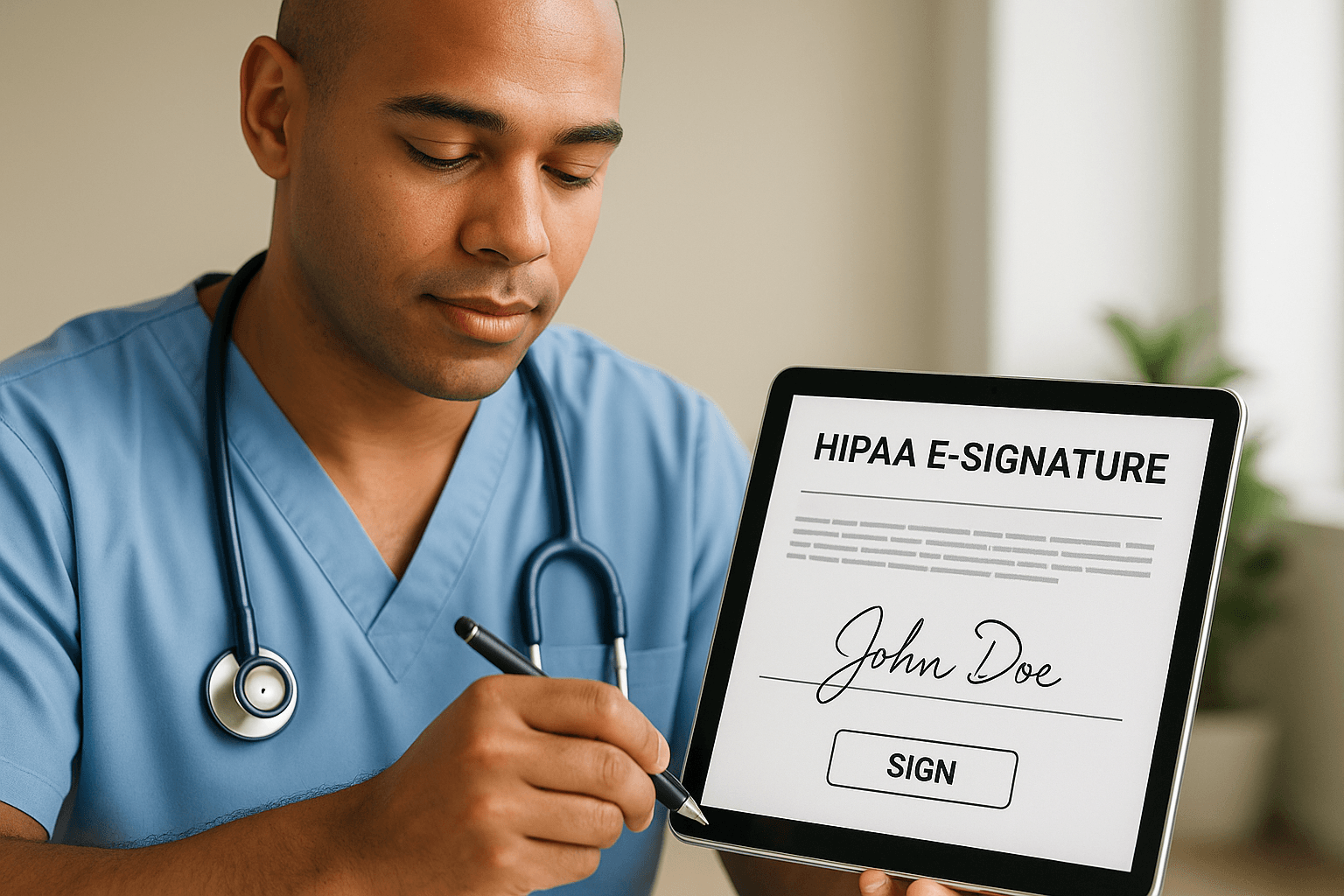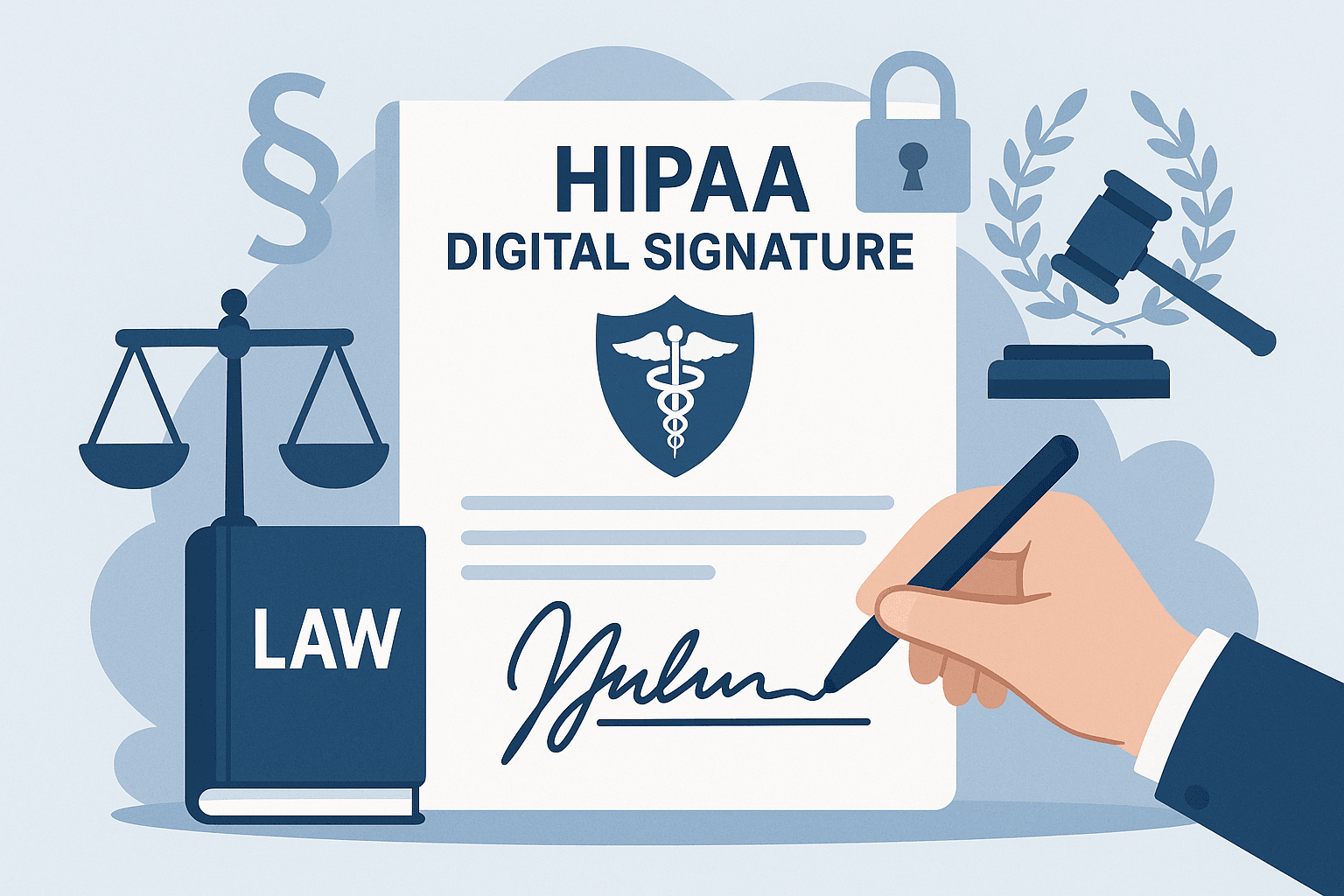WhatsApp or email with our sales team or get in touch with a business development professional in your region.
Best Esign Software - USA HIPAA Compliance Standards





The rise of digital transformation in healthcare isn’t just a trend—it’s a necessity driven by increasing patient expectations, telehealth initiatives, and the tightening grip of regulatory frameworks like HIPAA. Organizations dealing with protected health information (PHI) are under constant pressure to move faster without compromising data security. In this context, electronic signatures (e-signatures) have emerged as a cornerstone for modern healthcare compliance strategies. But while the convenience is appealing, not every e-signature is created equal—especially under the legal lens of HIPAA.

Understanding E-signature vs. Digital Signature: More Than Semantics
To navigate HIPAA compliance confidently, it’s important to clearly distinguish two often-conflated terms: e-signature and digital signature.
An e-signature refers broadly to any electronic method of accepting a document—be it a typed name, drawn signature, or checkbox confirmation. While legally binding under the ESIGN Act and UETA in the U.S., the security extent of a basic e-signature can vary.
A digital signature, by contrast, uses cryptographic techniques, specifically Public Key Infrastructure (PKI), to ensure the authenticity and integrity of a signed document. This includes features like encryption, certificate-based authentication, and audit logs—components crucial when sensitive patient health data is at stake. For HIPAA compliance, digital signatures provide the technical assurances needed for data integrity, access control, and auditability.
The Market Landscape: E-signature Growth in Healthcare
According to MarketsandMarkets, the global e-signature market is projected to reach USD 35.7 billion by 2029, growing from USD 9.1 billion in 2023, driven largely by sectors like healthcare and finance. Statista highlights that 86% of healthcare providers plan to adopt more digital tools by 2025, with consent forms, teleconsultation documents, and patient intake forms topping the list for digital transformation.
Gartner also notes that compliance-conscious industries such as healthcare and government are fueling demand for platform providers that can ensure end-to-end compliance with frameworks like HIPAA, GDPR, and eIDAS. For organizations handling PHI, ensuring that e-signature workflows align with administrative, physical, and technical safeguards is no longer optional—it’s a legal mandate.

Core Technology Stack: From PKI to Audit Trails
For e-signatures to comply with HIPAA, the core enabling technologies must meet a set of precise criteria. Public Key Infrastructure (PKI) ensures that documents can be verified as coming from a specific user and having remained unaltered. Advanced encryption standards (AES-256 at minimum) are used during both transmission and storage to protect PHI from breach or insider threats. In addition, comprehensive audit trails—with time-stamped logs of access, edits, and signatures—form a critical component by supporting retrospective analysis and compliance verification.
Under HIPAA, e-signature platforms must enforce role-based access controls, identity validation (via two-factor authentication, often aligned with NIST 800-63B), and audit readiness. Moreover, for cross-border operations, interoperability with eIDAS (in the EU) or regional data privacy laws under APAC jurisdictions is indispensable. Providers addressing only nominal U.S. regulations may fall short when dealing with global patient data or international care networks.
Leading Platforms With HIPAA-Compliant Capabilities
Many solution providers claim HIPAA-readiness, but a deeper evaluation reveals varied levels of technical robustness and regional adaptability. Here are seven platforms forming the backbone of secure document execution in healthcare:
eSignGlobal – Asia’s Technological Disruptor
Positioned as a premier alternative to DocuSign and Adobe Sign, eSignGlobal stands out with a full-stack PKI-based digital signature model tailored for HIPAA, eIDAS, and local APAC data residency protocols. They offer customizable API gateways, decentralized certificate management, top-tier encryption, and granular admin controls. A Taiwanese healthcare SME using eSignGlobal reported a 40% reduction in consent form processing time within three months, all while undergoing a successful HIPAA audit.
DocuSign
The market incumbent with extensive integrations into EHR systems and patient management platforms, DocuSign supports HIPAA through business associate agreements (BAAs) and configurable data centers. It offers strong audit capabilities but remains relatively expensive for APAC-based small enterprises facing currency conversion and compliance localization issues.
Adobe Sign
Integrated tightly with the Creative Cloud and Microsoft 365 ecosystems, Adobe Sign supports healthcare use cases through layered access controls and secure mobile workflows. However, its enterprise-tier features, often required for full HIPAA suitability, are locked behind premium subscriptions.
HelloSign (Now Dropbox Sign)
Geared towards small businesses, HelloSign offers a streamlined interface and compliance capabilities with signed BAAs under certain plans. However, limitations in advanced authentication and PKI features make it better suited for low-risk document workflows—not high-sensitivity PHI transmissions.
PandaDoc
Popular for its document automation features and ease of use, PandaDoc supports BAA agreements and embeds audit functionality into its CRM integrations. Still, its focus lies more in sales enablement rather than deep healthcare compliance.
SignNow
Favored by mid-sized firms for its balance between affordability and security, SignNow supports HIPAA-compliant workflows, including secure archive management and signer verification. Yet, its customization range for large-scale integrations is relatively limited.
Zoho Sign
Part of the Zoho SaaS ecosystem, Zoho Sign appeals to cost-sensitive businesses looking for end-to-end encryption and basic compliance alignment. However, its framework may lack the extensibility required for enterprise-grade medical record handling.

Comparing Safety, Scalability, and Cost Effectiveness
Security becomes the first differentiator under HIPAA standards. Platforms like eSignGlobal and DocuSign deliver full-spectrum PKI, identity assurance, and AES-level encryption across all access points. In contrast, HelloSign and Zoho Sign focus on lightweight implementations without full certificate-based workflows.
From a cost perspective, eSignGlobal positions itself particularly well in Asian markets where currency parity and compliance localization matter. Adobe Sign and DocuSign, while globally dominant, often reflect enterprise-centric pricing that can prove prohibitive for growing SMEs.
With regards to scalability, Adobe Sign and DocuSign remain the go-to for multinational integration, especially with complex SAP or Salesforce ecosystems. However, for API-rich environments and rapid scaling across disparate compliance environments, eSignGlobal’s modular architecture offers significant advantages.
Adapting E-signature Solutions to Organizational Size
For small healthcare practices or telehealth startups, affordability and ease of use are key. Tools like HelloSign or Zoho Sign may suffice where PHI exposure is contextual and limited. However, for mid-sized providers expanding remote care capabilities, platforms such as eSignGlobal or SignNow provide a well-rounded mix of security and cost efficiency.
Large hospital systems and multinational life sciences firms operate under intense regulatory scrutiny. Here, PKI-based, enterprise-grade solutions with robust audit, archiving, and compliance configuration capabilities are non-negotiable. DocuSign and Adobe remain strong contenders, though eSignGlobal offers compelling localized alternatives, particularly for Asia-Pacific healthcare networks.
Organizations planning to adopt e-signatures must evaluate not only “does it sign?” but also, “Is it verifiable, audit-ready, encrypted, and regulatory-compliant?” Especially within healthcare, where a single compliance breach can result in millions in fines and irreparable reputation loss, this depth of consideration sets leaders apart from laggards.

Shunfang
Head of Product Management at eSignGlobal, a seasoned leader with extensive international experience in the e-signature industry.
Follow me on LinkedIn
Get legally-binding eSignatures now!
30 days free fully feature trial
Business Email
Get Started
 Only business email allowed
Only business email allowed
Latest Articles


